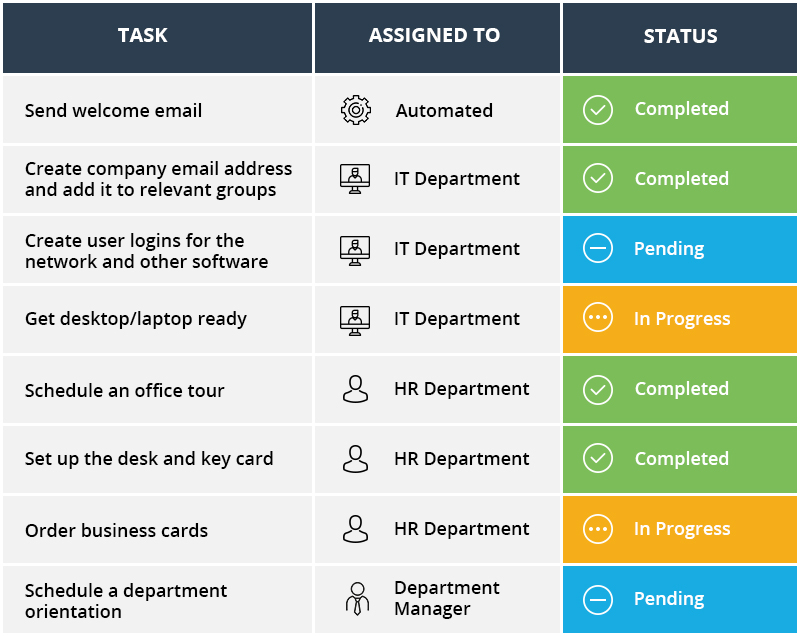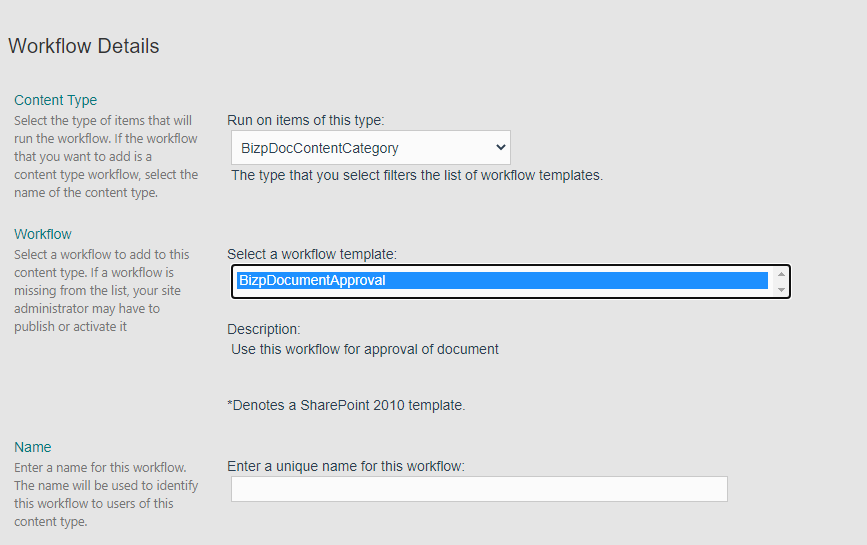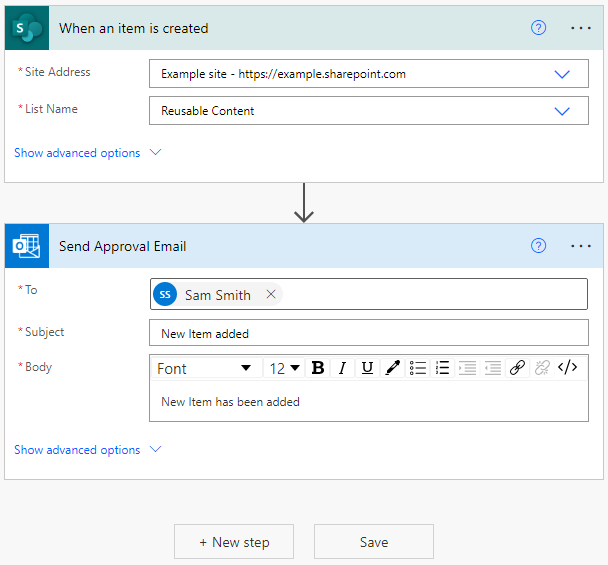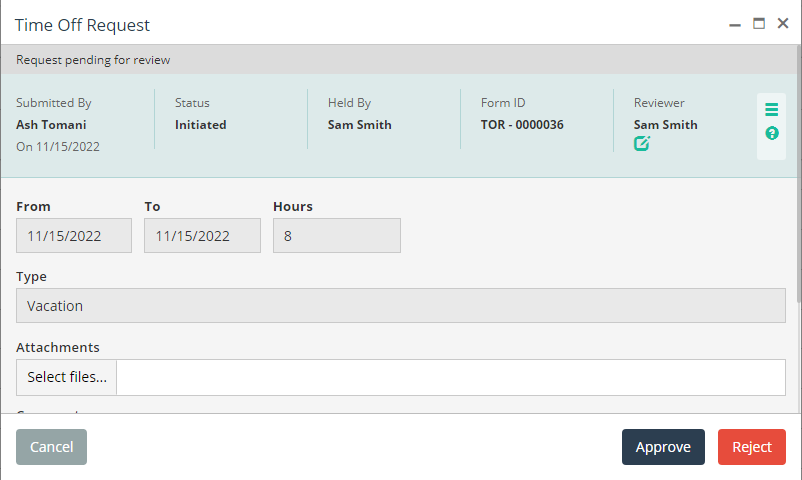Table of Contents
- What is A SharePoint Workflow?
- What Are the Most Common Types of Workflows in SharePoint?
- Benefits of SharePoint Workflow
- Common SharePoint Workflow Examples
- How to Create SharePoint Workflows?
- Using A Modern Intranet to Get Started with SharePoint Workflows
Step into a smarter digital workplace
Get a Free Product TourIn today’s era of hyper-automation, enterprises need to align automation and technology with unique business processes. To match these requirements, it is essential to adopt modern solutions to automate your workflows and adapt to emerging business operations.
If you are also looking to improve your business efficiency with workflows, SharePoint is a great platform that can generate customizable workflows to automate most of your business processes. In a nutshell, workflow refers to the way of getting work done. Think of buying groceries – you will follow a workflow to shop for groceries. Perhaps, it goes like this:
- Look at the online recipes while planning the weekly meals
- Create a grocery list
- Grab a bag and leave the house
- Search for grocery store coupons
- Drive to the grocery store
- Pick the selected grocery items
- Drive back home
When tasks are well-documented and implemented through a specific path, it can save a lot of time and money. Read on to explore the enormous potential of SharePoint workflows in business process automation, and learn how to approve documents/projects, automate notifications and business tasks, automate work status, and much more.
What is SharePoint Workflow?
Consider workflows as no-code applications that automate a wide range of business functions from initiation to completion. It provides conditions, rules, and actions to automate multiple tasks and behavior by activating pre-defined triggers. Workflows in SharePoint are a string of “if” and “then” statements. For example, if X person sends a request for document approval, a notification will be sent to Y person.
What Are the Most Common Types of Workflows in SharePoint?
Workflows are everywhere in the workspace. There are various types of workflows in SharePoint online. Some workflows are inbuilt, and others can be built and customized to do anything you can think of. Here are some workflows you will use most often.
1. Status Workflows
This workflow automates the document status within the SharePoint environment. For example, if a document is uploaded to SharePoint, it will be tagged as “Pending for review”, and when it is reviewed by the manager, it will be tagged as “Under Review”. Lastly, when the document is reviewed, it will be tagged as “Approved/Rejected”. Based on the document activities, the status of the document will be changed automatically.
2. Approval Workflows
Irrespective of the industry, timely document approval is the crucial aspect of a entire document management workflow within the organization. Most businesses are dealing with time-consuming approval processes that result in work delays. Rather than sending the document and tracking the approval process manually, approval workflows in SharePoint can automate the chain of approvals. This workflow initiates a chain of approval within the SharePoint environment. Most organizations are moving to Microsoft 365 intranet to deploy effective document security and approval workflow processes. It allows businesses to store in document libraries and define approval workflows at the library and document levels.
3. Notification Workflows
With the increasing importance of collaboration in the workplace, it is important to notify relevant users about certain tasks/actions. However, sending emails or message notifications to multiple users will take a lot of time and effort and ultimately, lead to a loss of productivity. SharePoint notification workflows can automate the notifications according to the pre-set conditions. The notifications will be sent to assigned members along with the relevant information and action requirements. A turnkey intranet solution can help businesses leverage this automation while leveraging SharePoint workflow templates.
3. Custom Workflows
The custom workflows can be created based on the business-specific requirements within the SharePoint environment. Once suitable workflows are identified, SharePoint allows businesses to use a combination of workflows. Custom workflows allow businesses to create their personalized SharePoint mini program. For example, when a document is uploaded to SharePoint, the approval status is triggered. And when the document is approved, the relevant notifications are sent to assigned members. After sending notifications, the workflows can be further automated to upload the document to the appropriate document library with the SharePoint environment.
Benefits of Using SharePoint Workflows
Workflows are not only about scheduling and creating a process, but it is much more than that. SharePoint workflows have great potential to streamline communication, organize information, and automate business processes. Here are the top benefits of using SharePoint Workflow.
1. Simplify Process Automation
Using SharePoint for workflow management ensures successful coordination and automation of tasks rather than automating every task independently.
2. Improved Visibility of Employee Performance and Productivity
Workflows make future work planning easier and more transparent. It allows managers to access a history of activities, create an activity trail, and audit previous tasks. These metrics are used to monitor business processes and provide directions to improve them.
3. Streamline Redundant Business Operations
SharePoint workflows can enhance efficiency by streamlining document management and expediting business processes. For example, SharePoint workflow automation can be used to get feedback from multiple team members on a single document instead of sending the document to each team member.
4. Excellent Communication and Collaboration
Lack of communication with colleagues and management can lead to low employee retention rates. SharePoint workflows can be used to provide a clear line of communication and set a successive chain of events. Workflows in SharePoint online also make it easier to collaborate across businesses and even industries by providing templates, workflows, and task plans on the cloud.
5. Eliminate Human Errors
When business processes are conducted by employees, there is a high risk of human errors. On the contrary, SharePoint workflows show the real-time state of any item and leave employees with no more excuses for making mistakes.
6. Enforce Compliance
Using workflows in SharePoint ensures proper compliance with regulations. It allows businesses to complete relevant tasks on time. The error-free and repeatable nature of SharePoint workflow automation is also perfectly suitable for compliance.
7. Speeds Up the Approval Process
SharePoint workflow templates enable a quick and seamless document approval process. The custom workflows can be created to automatically change the document status showing “under review”, “approved”, or “rejected”. It also enables the document to flow hierarchically to track the progress in real-time.
8. Single Source of Information
It is difficult for employees across different departments to access the information quickly. SharePoint workflow helps in organizing and retrieving information seamlessly from varied resources and applications. The search filters can also be used to find relevant information quickly.
Common SharePoint Workflow Examples
Workflows are everywhere. If you are printing a set of documents repeatedly, that’s a workflow. If you are organizing dynamic data in a spreadsheet, that’s a workflow. Let’s look at some common examples to learn about SharePoint workflows.
1. Employee Onboarding Workflow
Onboarding is a standardized process to welcome new hires and provide relevant training about the company, work practices, and organizational culture. Learn how a SharePoint intranet can make your employee onboarding successful. SharePoint workflow automation can be used to automate various activities. The list of activities could include:

2. Procurement Workflow
The procurement process has multiple workflows, and it begins with the approval of vendors. The second workflow is created when the purchase order is created. Once the purchase order is approved and sent to the vendor, the goods are received. The final workflow is activated for invoice and payment.
3. Sales Pipeline Workflow
This workflow indicates the progression of sales within the organization. It captures the lead, follow-ups, proposals, negotiation, and other repetitive tasks. The sales process can be organized within the workflow to make the whole sales pipeline more efficient.
4. Reimbursement Workflow
Another common workplace activity is the reimbursement of expenses. The workflow is initiated with the submission of a reimbursement request and then, the manager approves or declines the request. The approval is sent to the finance department and payment is transferred to employees. SharePoint workflow automation can be used to track requests, receipts, and payment status that streamlines the overall process.
How to Create SharePoint Workflows?
1. Out-Of-The-Box Workflows
There are various inbuilt workflows within SharePoint such as approval, disposition, feedback, and signature collection. These inbuilt workflows can be created to automate regular business processes. This option does not allow the creation of custom workflows associated with the unique business processes.

2. Microsoft Flow
It is easier and much more powerful to create business workflows with Microsoft Flow. Unlike SharePoint Designer, Microsoft Flow allows you to integrate seamlessly with SharePoint and other productivity applications. The content approval workflow can be created to automate the approval processes within the SharePoint environment. It allows businesses to set and manage approval scenarios such as employee leaves.


Using A Modern Intranet to Get Started with SharePoint Workflows
SharePoint workflows provide an effortless way to build, organize, and monitor workflows across the organization. It seamlessly integrates with the components of your existing tech stack to improve sharing and collaboration across systems, applications, and teams while eliminating data silos. But it is important to choose the right workflow management system that can integrate with your existing systems, meet your business and security requirements, offers flexibility, and provides a centralized view to monitoring workflows.
BizPortals 365, a modern SharePoint intranet can ignite automation by providing the required accuracy and agility in workflow management. It offers inbuilt SharePoint templates along with customization capabilities to create secure workflows without any coding experience. Learn how to create and use workflows in SharePoint to work more efficiently and save time.
Table of Contents
- What is A SharePoint Workflow?
- What Are the Most Common Types of Workflows in SharePoint?
- Benefits of SharePoint Workflow
- Common SharePoint Workflow Examples
- How to Create SharePoint Workflows?
- Using A Modern Intranet to Get Started with SharePoint Workflows
Step into a smarter digital workplace
Get a Free Product Tour


 Learn
Learn 

